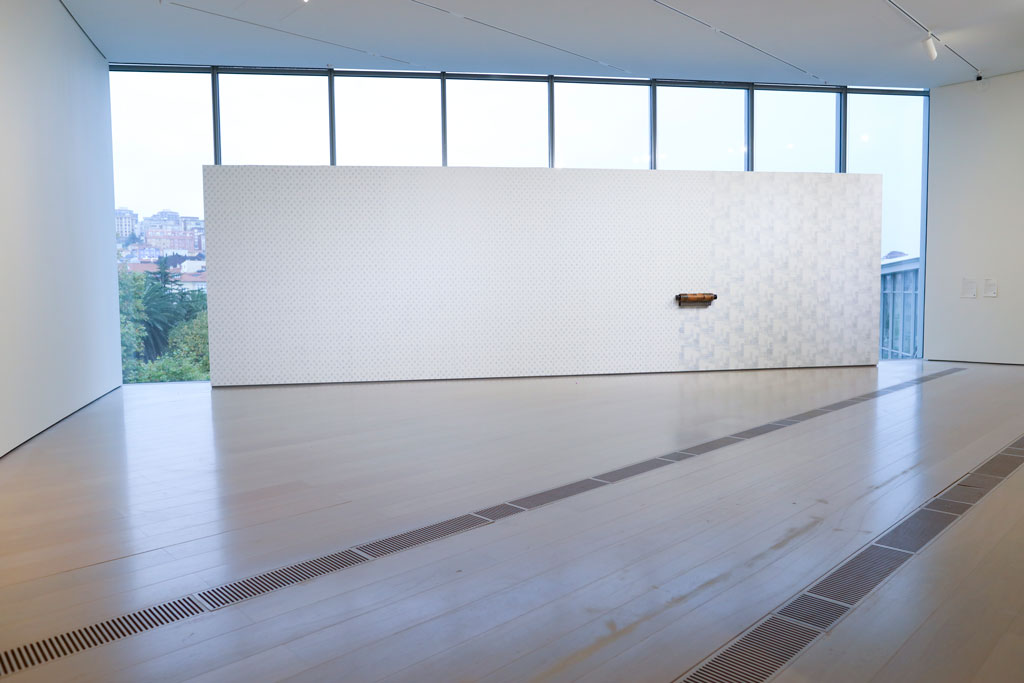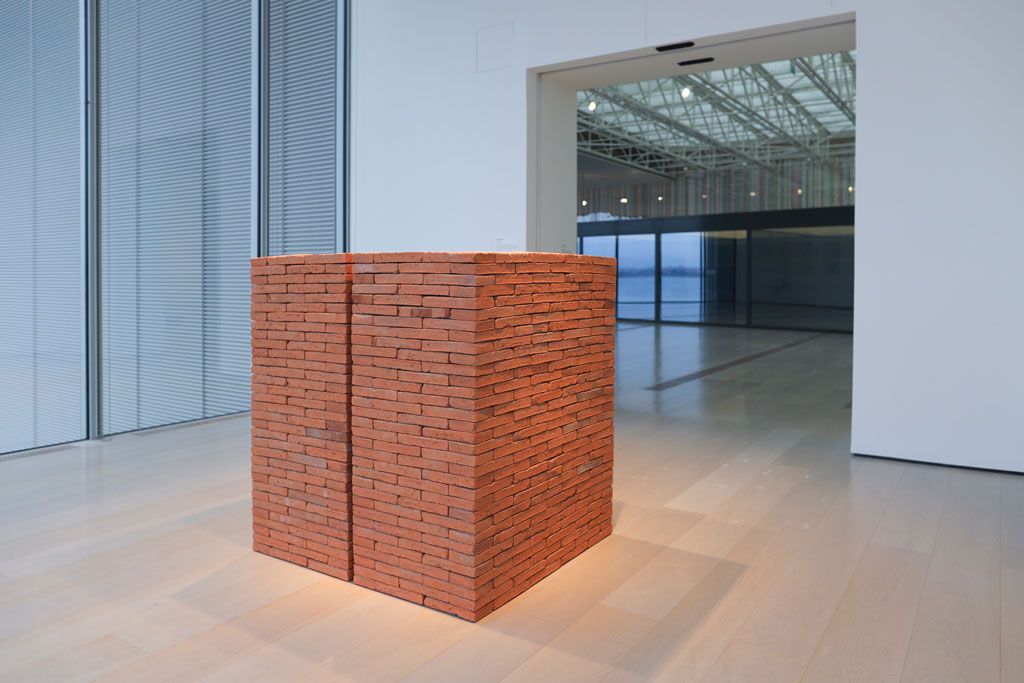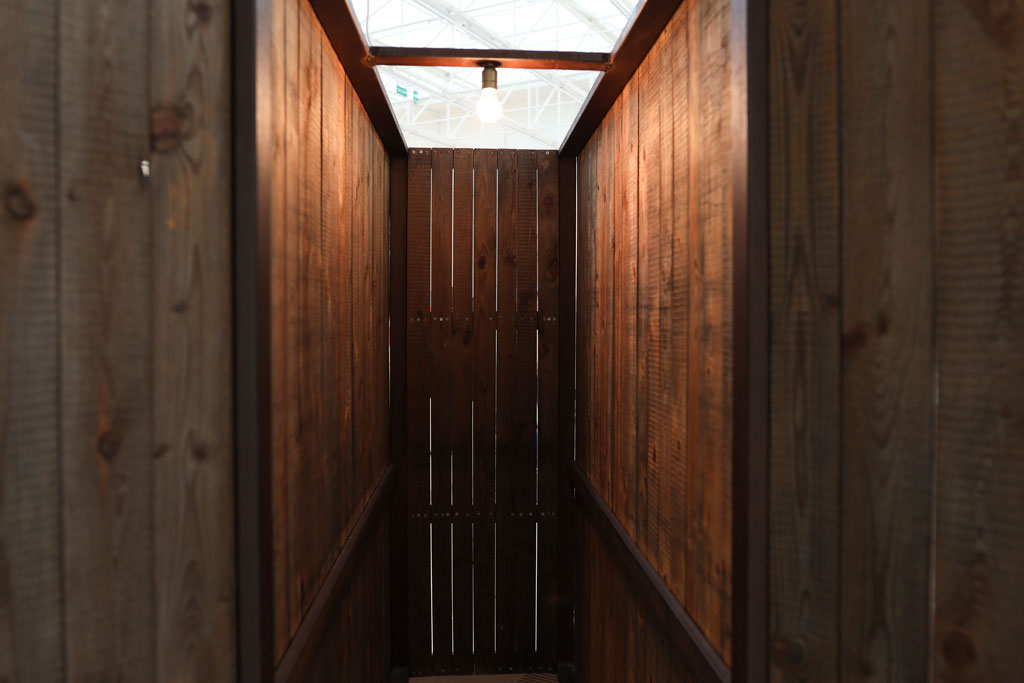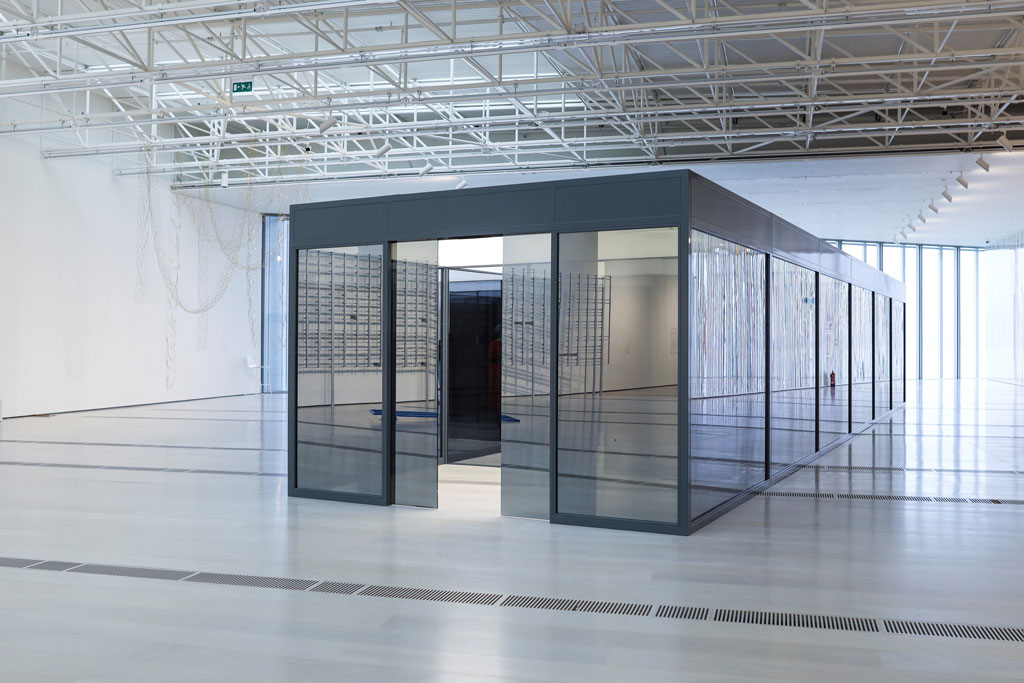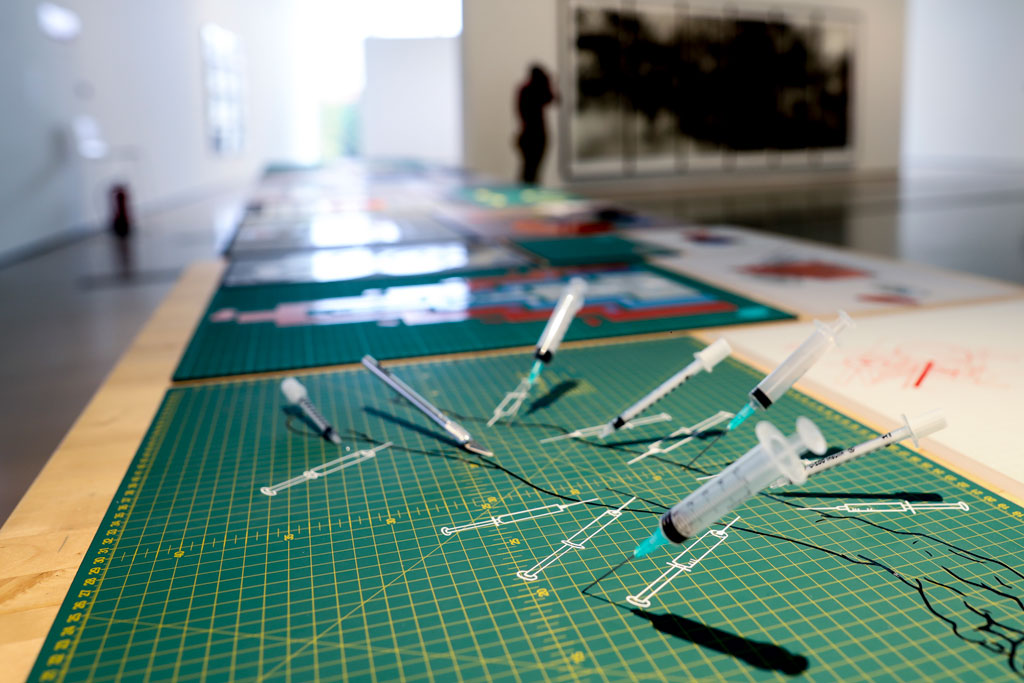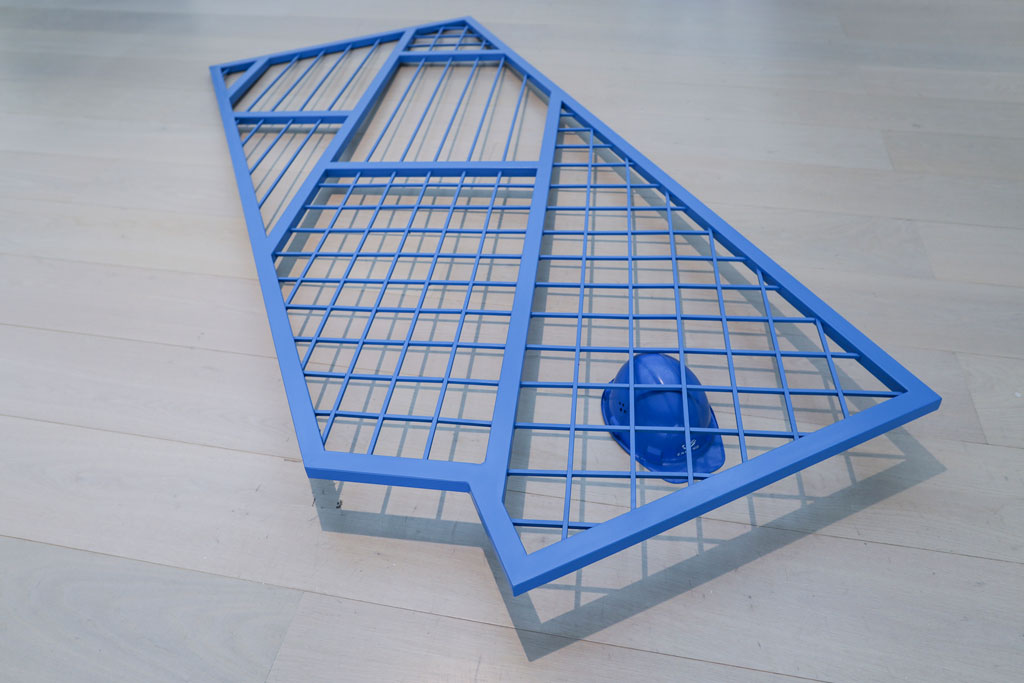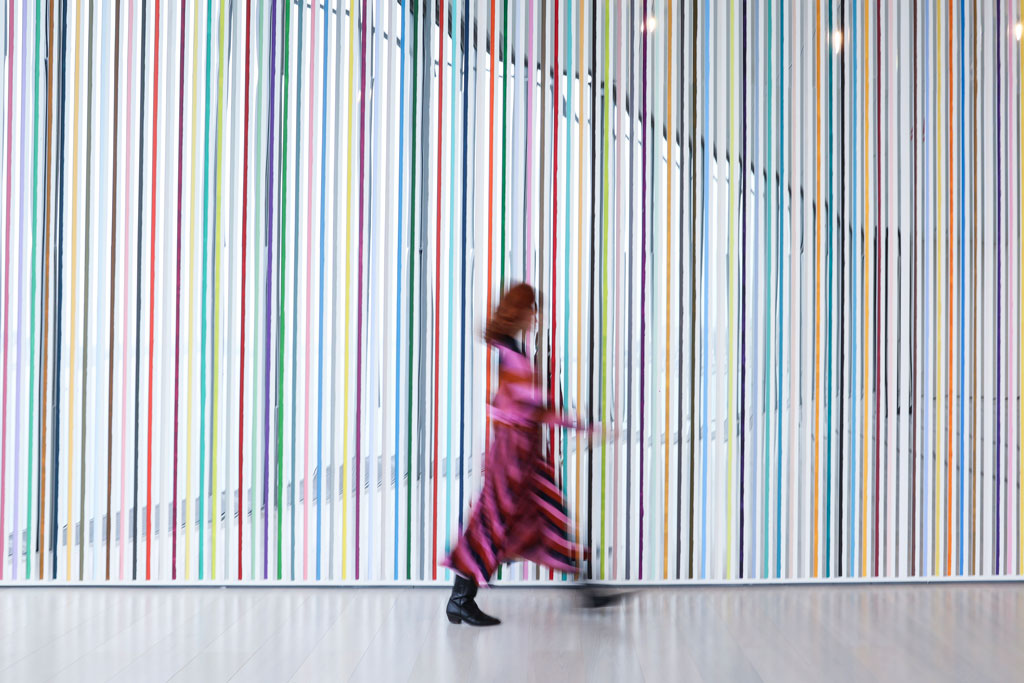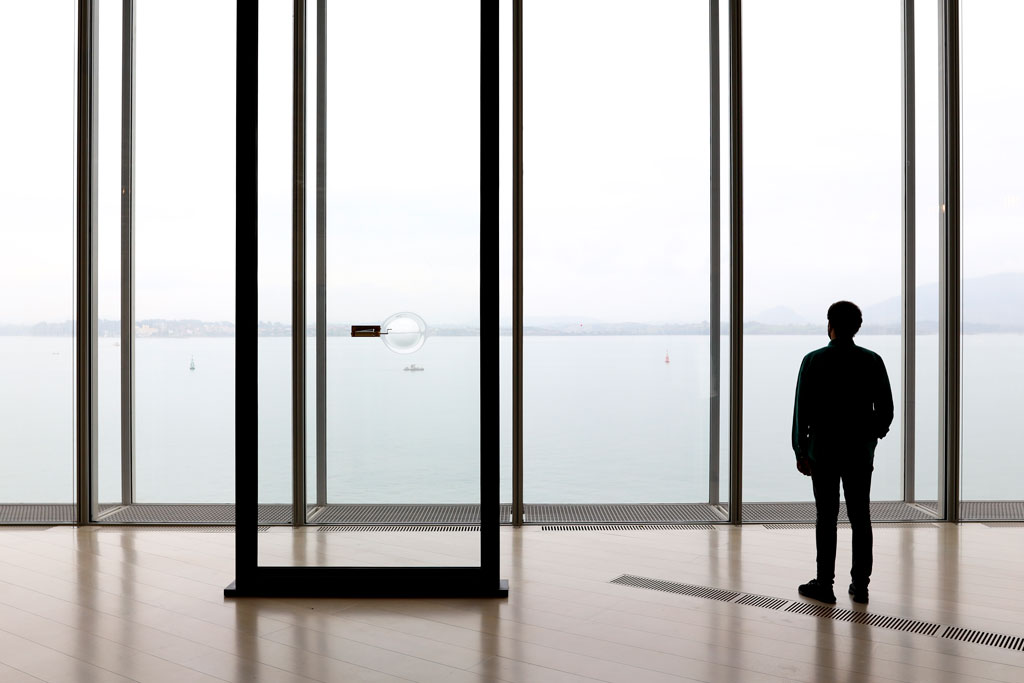ART-PRESENTATION: Architecture Into Art-A Dialogue
 The exhibition “Architecture into Art: A Dialogue”, conducts a conversation with Renzo Piano’s Fundación Botín art centre building, which has become an icon and a landmark of Santander’s Paseo Marítimo since it opened in June 2017, and addresses the relationship that artists establish with the physical site in which they show their work, the strategies by which they appropriate the exhibition space and the architectural space, investigating the mutual influence architecture and art exert on one another.
The exhibition “Architecture into Art: A Dialogue”, conducts a conversation with Renzo Piano’s Fundación Botín art centre building, which has become an icon and a landmark of Santander’s Paseo Marítimo since it opened in June 2017, and addresses the relationship that artists establish with the physical site in which they show their work, the strategies by which they appropriate the exhibition space and the architectural space, investigating the mutual influence architecture and art exert on one another.
By Efi Michalarou
Photo: Centro Botín Archive
The exhibition “Architecture into Art: A Dialogue”, occupies the second floor galleries at Centro Botín, shared between two spaces separated by an open, diaphanous wall, which sets the rhythm of the exhibition. While the first room is dedicated to works in two dimensions, the works in the second room are three-dimensional, reflecting the idea of architecture as both object and subject, though it is not easy to define the actual borderline in many of the pieces in the show. Many of the works in this exhibition are formally indebted to the philosophy of Minimalism. In many cases the artists only worked on the concept, leaving to others the task of physically creating the works. This is the case of “Seven Sliding Doors Corridor” (2016), by Carsten Höller, which uses electronic mechanisms and materials to generate a prototypical physical experience of modernity, combining references to corporate architecture and science fiction. The piece consists of a corridor with seven sliding doors and a reflective surface which has different degrees of opacity or transparency, through which it is possible to see from inside to outside or from outside to inside. For Benjamin Weil, this work ‘establishes the sculpture as a space within the architectural space and reflects on how these two spaces relate to one another through the dynamic established between what this sculpture occupies and the sculpture itself.’ The same room also houses Anri Sala’s “No Window No Cry (Renzo Piano & Richard Rodgers, Centre Pompidou, Paris)” (2012), consisting of a full-scale replica of a window of the famous museum, where this piece was first shown. Placed here in front of the Centro Botín window, the work establishes a relationship between windows in the first museum designed by Renzo Piano (Pompidou Centre) and in one of the most recent (Centro Botín), bringing out a certain degree of formal continuity between the two buildings despite the forty years that separate them. In its new location, the window enables Sala to frame the view and in so doing appropriate it, in clear reference to the art-historical concept of the veduta*.
Since the early nineties, Miroslaw Balka has been listening to the architecture of the settings in which he exhibits his sculptures. Always in dialogue with space, he considers that the footprint that remains in architecture is architecture. His piece “here, 196 x 230 x 141” (2007), consists of a hollow triangular structure which suggests the entrance to another space – to a mine, perhaps – with the bare bulb that illuminates its interior turning off as soon as the visitor approaches and enters a corridor, which gets narrower. The sculptural presence of this object, too, clearly alludes to architecture. The work by Jorge Méndez-Blake, “From the Bottom of a Shipwreck” (2011), uses bricks to construct two tower-like structures, which allude to the architecture of the first industrial era in a theatrical mise en scène of a volume of Stéphane Mallarmé’s Symbolist poetry and function, in some sense, as a pair of hugely oversized bookends or suggest the walls of a library. In “in Attempt at Conservation” (2014) Carlos Bunga chooses to enclose a three-dimensional painting on cardboard in a display case set into the wall of the room, while Sara Ramo makes a direct reference to architecture with two works that formally allude to the decorative arts: “Intractable (tribute to Ivens Machado)” (2019), a column of monumental proportions; and “Slit” (2019), an incision in the wall, in which the artist places various objects she has collected. For Ramo, every built space is a shell, a skin or a mask, and as an artist she seeks to turn buildings around, dig up the floors, get behind the plaster, dress the columns, open little doors. Martin Creed‘s mural piece, “Work No. 2696” (2016), generates a distortion of our spatial perception with a composition of coloured pigments and mirror stripes, materials traditionally used in the decorative arts. Though its occupation of the space is decidedly minimalist on a visual level, the work makes a big impression thanks to the dual presence of the painting itself and the mirrored stripes that reflect the space. Anri Sala’s “All of a Tremble (Encounter I)” (2017) takes the shape of a projection screen covered in wallpaper that obstructs the view of the city. Sala takes his cue from the process of semi-industrial wallpaper production to create a musical instrument – actually made from rollers once used to produce the painted patterns. The hand-drawn motifs on the wallpaper appear at first to be the work of the mechanism we see affixed to the wall. It seems impossible to determine whether the roller is printing on the wall, or is interpreting the wallpaper patterns as if they were musical scores. Getting closer, one comes to realize the two halves of the wallpaper printing rollers activate a set of metal tines that turn the motifs on the paper into a melody. However, it remains unclear if the sound configures the image or if it is the image that produces the sound.
Patricia Dauder ‘s “Floor” (2018) , consists of a set of ninety worn pieces of parquet flooring, laid down in the exhibition space to form a rectangle on which the artist has placed an apparently burnt work on paper. Floor relates directly to the architecture of the space it occupies and reflects on the memory trapped in architectural elements, while its structure also gestures towards Minimalist art. The parquet has been torn up and removed from the place where it had a function, and it is this displacement that transforms it into sculpture. The work originated in 2011, when the artist used to walk around Brooklyn and Queens discovering a dark old city that did not conceal its decadence and exposed to view the layers of history its houses contained. Floor is just a delimitation on the ground, almost without volume, without body; a listless layer of eroded materials. But, at the same time, it is the vestige of a hypothetical dwelling and the memory of those who occupied it. The work of Modernist architects have inspired a series of works by Juliao Sarmento, who trained as an architect before turning to art. For instance, the title of the canvas “Neutra Blue Lilies” (2011), one of a specific series of works begun around 2009-10, refers to the Austrian architect Richard Neutra, a major contributor to the shaping of the Los Angeles landscape as a mecca for a laid-back lifestyle in contact with nature, pioneering the use of new materials in residential architecture, something that Sarmento incorporates almost as an image in his painting. Carlos Garaicoa also studied architecture, and makes good use of it in his reflections on the decrepitude that besets his native Cuba. In “The Word Transformed” (2009) he combines the architectural structure of billboards with the language of propaganda to create collages that restore the integrity of dilapidated buildings. The installation, which consists of eight light boxes and a large table covered with cutting mats of the kind used by graphic designers, is a kind of architectural construct in its own right.
Juan Navarro Baldeweg is the only one of these artists to have practised architecture as a profession, in parallel with his researches into form in the field of the visual arts. The painting of interior scenes has a venerable tradition, but his two diamond-shaped works: “Silver Room with Figure” (2006) and “Red Room with Figure” (2005) , approach their theme in a way that is closer to the architectural plan or axonometric than to the space of a real room, while the drawing of the figure, which serves as an indicator of scale, takes the form of a decorative element. A similar if more conceptual approach informs the work of Fernanda Fragateiro. Her installation consists of three elements: “Elevation (Quiet Side)”, “Ordinariness and Light, after Alison and Peter Smithson“ (2018); and “Blue Window” (2018) are all related to the Smithson’s Robin Hood Gardens social housing project, whose architecture, once emblematic of the Modernist utopia, came to exemplify the shortcomings of that paradigm. Years of campaigning by architects and heritage organisations failed to prevent the demolition of one of the post-war Brutalist housing blocks in 2017, in what the artist regards as an act of institutional vandalism. This critical approach to architecture as a construct also feeds the work by Muntadas. “Fences” (2009) is a series of twelve photographs of the gated entrances to houses in residential areas of São Paulo which invites us to reflect on the way in which, when trying to keep their property safe from strangers, people end up walling themselves in, transforming their home into a kind of prison and thereby turning the whole concept of security inside out. Julie Mehretu also reflects on the significance of the architectural space as a framework for social structures and interactions. The artist has made frequent references in her work to architecture, using technical drawings and the silhouettes of buildings as the basis for many of her compositions. “Epigraph, Damascus” (2016) is a polyptych of etchings that forms part of a body of work in which Mehretu engages with the destruction caused by the civil war in Syria.
* A veduta is a highly detailed, usually large-scale painting or, more often, print of a cityscape or some other vista.
Participating Artists: Leonor Antunes, Miroslaw Balka, Carlos Bunga, Martin Creed, Patricia Dauder, Fernanda Fragateiro, Carlos Garaicoa, Carsten Höller, Julie Mehretu, Jorge Méndez-Blake, Muntadas, Juan Navarro Baldeweg, Sara Ramo, Anri Sala and Julião Sarmento.
Photo: Carlos Bunga, Intento de conservación, 2014, © Carlos Bunga, Courtesy the artist and Centro Botin
Info: Curator: Benjamin Weil, Centro Botín, Muelle de Albareda s/n, Jardines de Pereda, Santander, Duration: 10/10/2020-14/3/2021, Days & Hours: Tue-Sun 10:00-14:00 & 17:00-21:00, www.centrobotin.org

